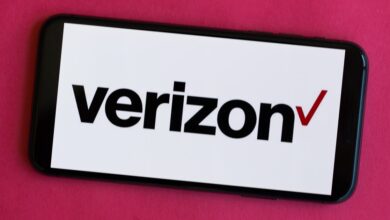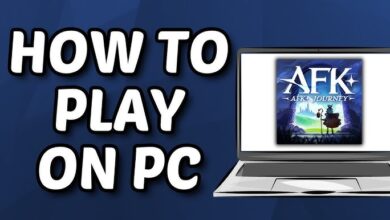How to Withdraw from Beyond Finance: A Detailed Guide

Beyond Finance is a debt relief service that aims to help individuals resolve their financial struggles by negotiating settlements with creditors. If you’re looking to withdraw from Beyond Finance’s program for any reason, whether it’s due to personal preferences, financial recovery, or any other cause, it’s important to follow a structured approach to ensure that your withdrawal is done properly. This guide will take you step-by-step through the process, explain the considerations you should keep in mind, and help you make the best decisions for your financial future.
Beyond Finance offers a debt relief program that works with creditors to reduce the total amount of debt you owe. They help individuals with unsecured debt such as credit cards, medical bills, and personal loans. Beyond Finance aims to negotiate settlements that lower your debts, and clients typically make monthly payments to an escrow account, which is used to pay off the settled amounts.
While the program can help those who are struggling financially, some individuals may wish to withdraw from the service after a certain period of time for various reasons. If you’re considering withdrawal, understanding the process and consequences is crucial.
2. Why You Might Want to Withdraw from Beyond Finance
There are several reasons why a person may choose to withdraw from Beyond Finance’s debt relief program. Here are some common scenarios:
- Financial Improvement: You might have improved your financial situation and no longer need the debt relief services.
- Dissatisfaction with the Service: Perhaps the services provided haven’t met your expectations, or you’re not satisfied with how the debt settlement negotiations have been handled.
- Alternative Debt Solutions: You might find a different solution such as consolidating your debt, using a personal loan, or pursuing bankruptcy that better fits your needs.
- Change in Financial Circumstances: A change in income, employment, or personal situation might affect your ability to continue with the program.
Whatever your reason, it’s important to understand the full consequences of withdrawing, as this might affect your debt repayment plan, fees, and any legal agreements you’ve entered into.
3. Step 1: Review Your Contract and Agreement
Before making any decisions, take the time to review the contract you signed with Beyond Finance. This document should outline:
- Your Commitment to the Program: Check if there are any clauses related to early withdrawal or cancellation.
- Fees and Penalties: Find out if you will be charged for withdrawing from the program early.
- Conditions for Withdrawal: Understand the conditions under which you can withdraw and if any specific notice is required.
- Obligations to Creditors: Some creditors might have already agreed to settlements, so you should be aware of any remaining responsibilities to them.
Reviewing your contract will give you a clear understanding of the potential financial impacts of withdrawing from Beyond Finance.
4. Step 2: Contact Beyond Finance
Once you have reviewed your agreement, the next step is to contact Beyond Finance directly. It’s usually best to reach out to the customer service department via phone or email. Here’s how you can proceed:
- Phone: Call Beyond Finance’s customer service line and explain that you wish to withdraw from the program.
- Email: You can also email them, providing your details and a clear statement of your intention to withdraw.
Make sure to ask for any necessary documentation or forms required to process the withdrawal. Keep a record of your communication in case you need it for future reference.
5. Step 3: Confirm Your Decision
After reaching out, Beyond Finance may ask for confirmation of your decision in writing. This could involve:
- Written Confirmation: They might require you to submit a formal written letter or an email to confirm your withdrawal.
- Review of Your Account: They may ask for an update on your financial situation to ensure that you’re making the decision with full knowledge of the consequences.
Ensure that you’re absolutely certain about your decision, as withdrawing from the program can have both financial and legal implications.
6. Step 4: Address Any Pending Debt Settlements
If you’ve already entered into agreements with creditors through Beyond Finance, you will need to address these settlements before withdrawing.
- Pending Settlements: If the debt is in the process of being negotiated or settled, withdrawing could impact these negotiations. You may need to finalize payments or ensure that the creditors are paid.
- Transfer of Funds: Beyond Finance may require you to transfer any remaining funds in your escrow account before withdrawing. This will cover any outstanding balances or penalties.
- Clarify Settlement Status: Confirm whether any of your creditors have agreed to settlements and whether they will be honored if you withdraw.
7. Step 5: Pay Any Outstanding Fees or Charges
If you are withdrawing from Beyond Finance before completing your debt settlement plan, there may be fees associated with ending the agreement early. These could include:
- Early Termination Fees: Some programs charge a fee if you decide to end the service early.
- Unpaid Fees: Ensure that you pay any outstanding fees, which could include administrative fees or a percentage of the amount settled.
- Account Balance: If your account has an unpaid balance for services provided, make sure to settle that as well.
It’s essential to clear all dues to prevent any negative impact on your credit score or legal issues.
8. Step 6: Monitor Your Credit Report
After withdrawing from Beyond Finance, keep a close eye on your credit report and credit score. Here’s what to monitor:
- Debt Status: Check if any debts settled by Beyond Finance show as paid or resolved on your credit report.
- Credit Score Changes: Withdrawing from a debt relief program can have an impact on your credit score, either positively or negatively, depending on how the accounts are handled.
You may need to take additional steps, like negotiating with creditors or using another debt management service, to fully restore your credit.
9. Possible Alternatives to Withdrawing from Beyond Finance
If you’re not satisfied with the program or facing difficulties, there may be alternatives to outright withdrawal:
- Debt Consolidation: Consider consolidating your debt into a single loan with lower interest rates.
- Debt Management Plans (DMP): A DMP allows you to work with a third party to pay off your debts through a structured plan, without withdrawing from Beyond Finance.
- Credit Counseling: Seeking guidance from a nonprofit credit counseling agency might help you find a solution that fits your needs better than withdrawing.
It’s worth exploring these options before deciding to withdraw, especially if you’re still in the process of debt relief.
Conclusion
Withdrawing from Beyond Finance is a decision that should not be taken lightly. It’s important to understand the process, your legal obligations, and the financial consequences. By following the steps outlined in this guide, you can ensure that you handle your withdrawal in the best way possible and set yourself up for financial success moving forward.
Frequently Asked Questions (FAQs)
1. Will I have to pay penalties for withdrawing early? Yes, depending on your agreement with Beyond Finance, you may have to pay early termination fees or settle any unpaid fees.
2. Can I negotiate my settlement after withdrawing? Once you withdraw, you’ll be responsible for negotiating settlements directly with creditors, unless you enroll in another debt relief program.
3. Will my credit score improve after withdrawing? Withdrawing can impact your credit score, depending on how the debts were managed during the program. It’s important to monitor your credit after withdrawal.
4. Can I rejoin Beyond Finance in the future? Yes, you can rejoin Beyond Finance, but it may depend on your circumstances and whether the company allows re-enrollment.
5. How do I check my escrow account balance? You can contact Beyond Finance directly or log into your account portal to check your escrow balance before withdrawing.



